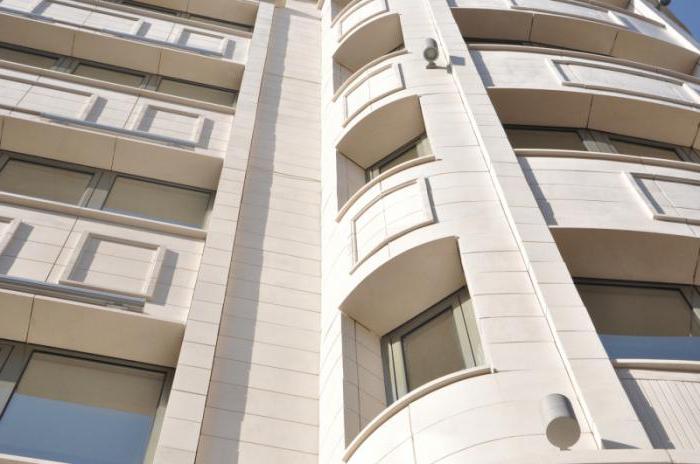All building structures have a common enemy - this is moisture. And if the air gap and waterproofing save when creating ventilated facades, then this method is not suitable for concrete or stone walls. The hydrophobization of the facade prevents moisture from entering the monolithic or brick structure and creates a film on the treated surfaces that does not allow water to pass through.
Differences
Such technological works are able to provide protection against the destructive influence of water, but have their own characteristics in the field of use and implementation methodology.
Gidrofobizatsiya facade consists in applying waterproof materials to surfaces that require protection. Welding and adhesive types made from natural or polymeric substances have become widespread. Such a coating is used to protect against prolonged exposure to moisture. The main disadvantage is the minimum vapor permeability, which is why a violation of the gas exchange process is possible in the wall structure. The pores are compacted after applying a special composition, and the building stops "breathing".

When using mineral materials such as plaster, concrete, stone, brick and sandstone to decorate the facade, hydrophobization becomes an important factor in their protection. When using technology, walls change their characteristics. Water repellents are compounds that have deep penetration and form a water-repellent film. This reduces the level of influence of dampness, but the vapor permeability remains the same. Moreover, this technology is useless with continuous contact with water.
Structure
Hydrophobization of the facade involves the use of active chemicals with high penetration. A distinctive feature of the preparations is high adhesion, which makes it possible to obtain a monolithic layer with low hygroscopicity. The surface subjected to processing, due to this, acquires protection from the direct influence of precipitation (including slanting rains).
Water repellents contain silanes, siloxanes, silicates, penetrating into the material several centimeters in depth through a porous surface. The formed layer has breathable, frost-resistant and waterproof characteristics.
Advantages
Hydrophobization of the facade has many advantages, the main of which are:
- Prevention of leaching of binders from the wall. Due to this, the likelihood of efflorescence on the surface (salt deposits) and further destruction of the material disappears.
- Subject to all the nuances of application, the average period of effectiveness of the coating is about 15 years.
- Preservation of the vapor permeability level allows maintaining the optimal air composition indoors.
- The wall structure after processing is not subject to wetting, which leads to a deterioration in heat-insulating characteristics.
- The coating provides easy maintenance of the facade surface.
Hydrophobization of the facade: technology
Application of the composition is possible both during the construction of the house, and during operation. The distribution of impregnation is not difficult and allows you to quickly process even a large surface area. The list of main tasks is determined after an initial assessment of the general condition. A suitable impregnation composition is selected depending on the type of efflorescence and the materials used for the walls.
Self-processing of low buildings is possible, but as for multi-storey modern buildings, the hydrophobization of facades by climbers will be the best option. This will allow you to perform all the work, regardless of complexity in a short period of time.
Preliminary preparation for processing is also required. It consists in cleaning the walls of dust and dirt, removing damaged materials. In most cases, washing the facade with special tools is sufficient. Hydro-jet cleaning is used for difficult soiling. The surface is then primed to prevent mold and mildew. The walls are covered by impregnation in two layers, between the application of which at least 1-2 hours should pass.
Features
During distribution of the composition, ambient temperature is of great importance. It is important to comply with the manufacturer's recommendations, since a violation of the established rules is fraught with a decrease in efficiency.
The application of water repellents is similar to painting walls. Special sprayers provide a high speed of work, but you can do with the usual roller and brush. It’s easier to prevent any problems than to deal with their consequences. Therefore, if comparing the cleaning of facades from efflorescence and hydrophobization, the latter option becomes more preferable and long-term.